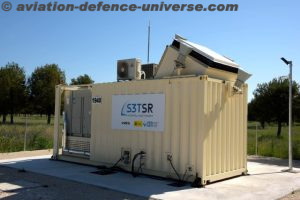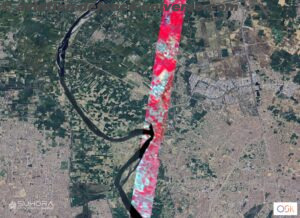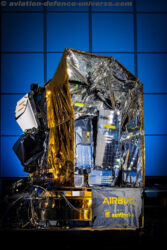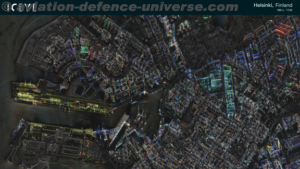 Madrid, Spain. 18 May 2023. It’s currently developing the new V2i version of the S3TSR radar, which constitutes an initial milestone in the planned roadmap to expand the capabilities of this modular and scalable system, which will also incorporate the detection and tracking of ballistic missiles
Madrid, Spain. 18 May 2023. It’s currently developing the new V2i version of the S3TSR radar, which constitutes an initial milestone in the planned roadmap to expand the capabilities of this modular and scalable system, which will also incorporate the detection and tracking of ballistic missiles
The improvements to the radar will reinforce Spain’s ability to protect military satellites and space assets in low orbit against space debris and hostile satellites approaching with the purpose of damaging, interfering or spying
Madrid, 18 May 2023.- Indra has taken a step further in the evolution of its S3TSR space surveillance radar, one of the most advanced systems in Europe and the world, by beginning to develop the V2-i intermediate version.
The new version of this civil and military radar, owned by the Spanish Ministry of Defence and part of the S3T space surveillance and tracking system launched by the Centre for the Development of Technology and Innovation (CDTI), will incorporate transmission elements (TX) up to quadruple its current power. It will thus reinforce the country’s ability to protect satellites and space assets against potential unintentional threats, such as space debris, and intentional threats, including enemy satellites approaching with the purpose of damaging, interfering with or spying on military space assets.
The project involves the completion of the civil work infrastructure on the radar site, located at the Morón Air Base in Seville, the production of new transmission elements (TX) and the integration and testing of the complete V2-I system and the Site Acceptance Test (SAT).
Thanks to this scalability, Indra’s system will be able to detect and characterize much smaller objects, covering the entire Low Earth Orbit (LEO).
The project will also incorporate the civil work resources that will make it possible to increase its power even further in the future, multiplying its original capacity by up to 16 times when the latest planned version (V3) is completed.
“This project constitutes an initial milestone in the planned roadmap to expand our capabilities with which our space radar came into being, demonstrating its modularity and scalability. This roadmap opens up the door to future extensions that include the incorporation of special modes, such as ballistic missile detection and tracking, which will contribute to the increase in space defence capabilities”, explained Cristina Vives, Indra’s Space Director.
The S3TSR radar is currently operated by the Spanish Air and Space Force from the Space Surveillance Operations Center (COVE) and it supplies daily data to the EU-SST (European Union Space Surveillance and Tracking Partnership) consortium network, to which it has contributed with the substantial increase in its capacity to detect and warn of the likelihood of numerous satellites colliding.
Indra’s radar was the first one in Europe capable of detecting fragments of Microsat-R and COSMOS 1408, the satellites destroyed in the Indian and Russian anti-satellite missile tests. It also monitors the trajectories of intelligence satellites from other countries.
The economy and security and defense of countries depend more and more on services provided from space, which makes satellites a strategic asset and clear objective in the event of conflict. Communications, air and maritime transport, logistics and meteorological information depend on its functioning correctly.

























































































































